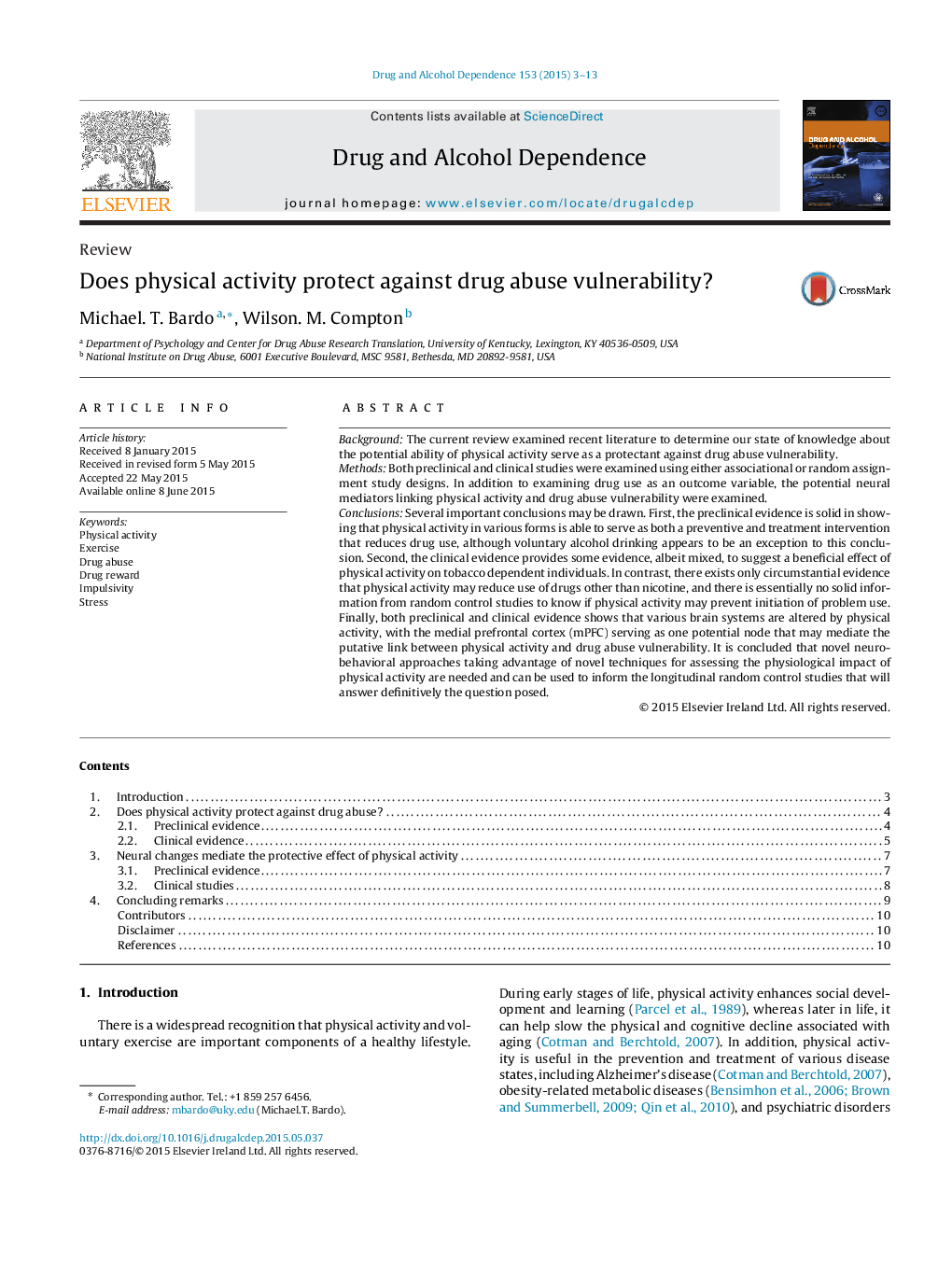| Article ID | Journal | Published Year | Pages | File Type |
|---|---|---|---|---|
| 7504871 | Drug and Alcohol Dependence | 2015 | 11 Pages |
Abstract
Several important conclusions may be drawn. First, the preclinical evidence is solid in showing that physical activity in various forms is able to serve as both a preventive and treatment intervention that reduces drug use, although voluntary alcohol drinking appears to be an exception to this conclusion. Second, the clinical evidence provides some evidence, albeit mixed, to suggest a beneficial effect of physical activity on tobacco dependent individuals. In contrast, there exists only circumstantial evidence that physical activity may reduce use of drugs other than nicotine, and there is essentially no solid information from random control studies to know if physical activity may prevent initiation of problem use. Finally, both preclinical and clinical evidence shows that various brain systems are altered by physical activity, with the medial prefrontal cortex (mPFC) serving as one potential node that may mediate the putative link between physical activity and drug abuse vulnerability. It is concluded that novel neurobehavioral approaches taking advantage of novel techniques for assessing the physiological impact of physical activity are needed and can be used to inform the longitudinal random control studies that will answer definitively the question posed.
Related Topics
Life Sciences
Neuroscience
Behavioral Neuroscience
Authors
Michael. T. Bardo, Wilson. M. Compton,
